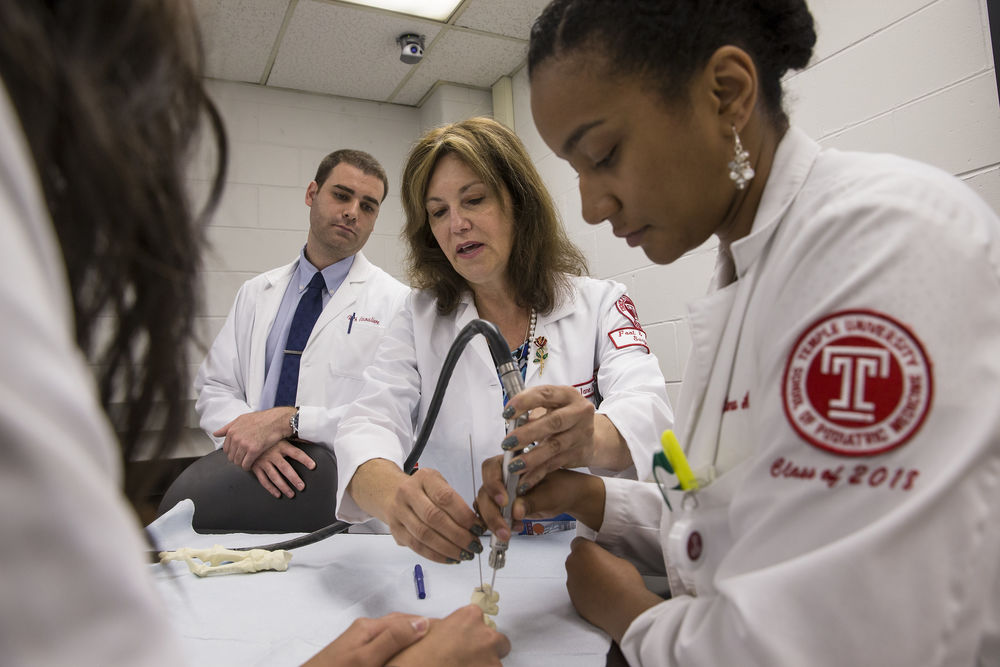Doctor of Podiatric Medicine
The Doctor of Podiatric Medicine program at Temple University’s School of Podiatric Medicine (TUSPM) is a four-year, patient-focused doctorate program that prepares students to become specialists in the prevention, diagnosis and treatment of disease and injury to the ankle, foot and lower extremities. The curriculum blends coursework with instruction in preclinical and clinical sciences. Graduates will be well-prepared to pursue postgraduate residencies and pass the two-part National Board Exams required to obtain their license to practice.
Doctors of podiatric medicine study the interplay of muscles, bones and nerves in order to diagnose and apply practical treatment techniques to ailments spanning nail disorders, hammer toes, heel pain, fractures, sprains and more. Foot pain can affect the whole body and indicate a much larger health issue. Conditions such as arthritis, diabetes, and heart and kidney disease have symptoms that can manifest first in the lower extremities making podiatrists essential in the early detection of serious health problems.
At TUSPM, the patient experience is just as important as the treatment we deliver. Students in the Doctor of Podiatric Medicine program learn from expert faculty how to infuse the human element into the practice of podiatry. With access to multiple facilities that feature advanced technology, students get a hands-on education that leaves them ready for the next phase of training as residents.
Program graduates will enter their surgical residencies able to evaluate the general medical status of their patients, including medications and possible drug interactions, as they manage lower-extremity problems. They will have the skills to determine whether symptoms result from a localized disease or indicate a larger systemic disease.

